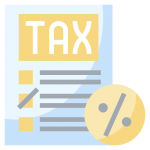Second of Four Options: Revenue Increase Strategies
On Tuesday, Nov. 10, the BH-BL Budget Advisory Committee (BAC) met for its third meeting, focusing their time on the strategy of using fund balance as a means of making up for a potential 20 percent cut in NYS aid. As part of this topic, the committee also discussed the tax levy, tax cap requirements, and the impact school tax increases could have on the community.
Before the presentation and discussion portion of the meeting, BAC co-chair Lakshmi Nagarajan took a moment to thank everyone for their time, efforts, and feedback and reminded the 59-member group that what they discussed at the last meeting and what they will be discussing at the current and future meetings are only theoretical options to be explored and discussed. The research will then be reported to the Board of Education.
The co-chair also reminded the committee of its charge, which is to gather ideas so that if mid-year reductions in State Aid become a reality, they’ve taken the time to plan and gather input thoughtfully from many different stakeholders to ensure there aren’t any last minute, non-transparent decisions.
Nagarajan pointed out that because the committee is looking at the four different areas, or “buckets”, (short-term structural changes to the delivery model, revenue increases, program reductions, and human resource reductions) in a vacuum, it’s really important for committee members to remember that this is just a theoretical exercise.
“There are no preconceived plans or bias about any of the options we are discussing,” she said. “We are researching a variety of areas in no particular order and having open discussions. The reality is that if we have to make adjustments, it is possible that we will need to use options from two or more of the four buckets we are exploring.”
The whole purpose of what we are doing, Nagarajan adds, is to plan for the worst case scenario.
The BAC co-chairs and school leaders have received a lot of feedback after the last meeting’s discussion about short-term structural changes to the delivery model. The biggest feedback being reported is that students want to be back in school, parents want their children back in school, and there are real concerns about shifting to a fully remote learning environment.
Superintendent Patrick McGrath adds that these exercises are a way to educate the community on the different options available to the district in the event of a significant mid-year state aid cut. He noted that the Board selected short-term structural changes to the delivery model to discuss first because, ironically, they thought it might be the least controversial of the four controversial topics. Because some of our neighboring school districts had already shifted to fully remote, the board thought it might be a topic on people’s minds. However, it turned out that by focusing on this topic first, people thought we were already planning on going fully remote after Thanksgiving. Over the course of the past two weeks, the school board and district administration received significant opposition to the idea of solving a budget gap by increasing the amount of remote learning. McGrath emphasized that the district has no plans or desire to transition to fully remote. Absent significant state aid reductions that could not be addressed in another manner, this would only occur if we were directed to do so by state or local health officials. Last meeting’s discussion was just an exercise in learning what might be saved if the district sought to close a budget gap by implementing one of a variety of delivery models this year, adds McGrath.
Based on reports from the state, the board of education may potentially have  to deliver bad news to the community about a possible $5 million loss in state aid this school year. In fact, Superintendent McGrath was part of a meeting recently with area superintendents who received information at the state level indicating that there will be a significant cut this year from the state level.
to deliver bad news to the community about a possible $5 million loss in state aid this school year. In fact, Superintendent McGrath was part of a meeting recently with area superintendents who received information at the state level indicating that there will be a significant cut this year from the state level.
“It’s very possible that the state will not be able to give schools the funding they had promised,” said McGrath. “It’s being predicted that the 20 percent cut at the state level will likely happen. The main question at this point is whether or not federal funding will backfill any or all of that state-level loss.”
McGrath explained that the district has never experienced this level of cuts during the middle of a school year: “The last time there was a mid-year budget cut was in 1991. The budget cut BH-BL experienced back then would be equivalent to about $1 million today. So we are looking at a cut that is potentially five times bigger than what was experienced then. This is why it’s important the committee starts having these real conversations,” adds McGrath. “Mid-year cuts in aid are particularly difficult because the budget and tax levy have already been set for the school year based upon state aid allocations provided by New York state in the budget development process.”
[WATCH RECORDING OF BOARD MEMBER NAGARAJAN & SUPERINTENDENT MCGRATH’S OPENING REMARKS]
Feedback from Community
In addition to the feedback addressed by Nagarajan and McGrath, Assistant Superintendent Dr. Christopher Abdoo addressed inquiries about whether or not the district could stop the current building project and use that money to fill the hole from the potential state aid loss. Abdoo explained that there is a difference between capital project funding and general budget funding, and that it’s actually illegal in New York state to use voter-approved capital project funds for anything other than what they were approved for. Most of the funds used to pay for improvement to school facilities comes as extra aid from New York state and is only payable upon completion of the construction project. Therefore, the funds earmarked for specific projects must stay within that project, and cancelling Phase 7 of the project would have no impact on the general operating budget.
Strategy 2: Short Term use of Fund Balance with Potential Tax Cap Override
After these introductory remarks, the focus turned toward a second strategy that could be tapped to close a mid-year budget gap: use of fund balance.  Abdoo began the discussion by providing the committee with a breakdown of the district’s fund balances and reserves.
Abdoo began the discussion by providing the committee with a breakdown of the district’s fund balances and reserves.
He explained that the district currently has an appropriated fund balance of $2.75 million that is built into the budget, partly as a planned reduction of fund balance, and partly as a provision for risk. This provision for risk means it is part of the budget not earmarked for anything specific should there ever be a need for one-time unexpected expenses, such as if a boiler broke and needed to be replaced, etc. This fund balance helps the district balance the budget and is carried over from year to year if these unexpected situations do not occur.
The district also has several reserves that can only be used for their specific intended purposes (i.e., workers’ compensation, unemployment insurance, retirement contribution, tax certiorari, employee benefits & accrued liabilities) and nothing else.
There is also an unappropriated fund balance of $2.43 million, which is akin to an individual’s savings account, but shouldn’t be used all at once or for expenses that are recurring, such as salaries.
“Depleting the district’s fund balance in one year is very dangerous and has several negative aspects,” explains Abdoo. “Most importantly, the district loses the flexibility to respond to unexpected needs without cutting other areas of our budget. When there is no fund balance, every unexpected increase in cost must be immediately countered with a corresponding reduction in some other program or service which can have a very negative impact on students.”
Other negative effects are more subtle but important to healthy financial operations. For instance, low fund balance leads to a deterioration to the district’s credit rating, resulting in higher interest rates for short- and long-term borrowing. Low fund balance also deprives the district of important interest revenue and forces costly short-term borrowing to address cash flow issues within a school year.
“Because of the estimated $1.25 million in additional expenses associated with the state’s COVID-19 regulations released in July, we are spending more within the budget this year than we thought we would,” explains Abdoo. “But we are prepared for this because of the provision for risk built into the current budget, in the form of appropriated fund balance. What we aren’t prepared for is the possible $5 million cut in state aid on top of the additional expenses. We simply do not have the resources for this level of funding loss.”
Overview of District Revenue Sources
To help committee members gain a better understanding of where funding for BH-BL comes from, Abdoo explained the major revenue sources for the 2020-21 school year.
- BH-BL’s total tax levy for 2020-2021 is $42,363,777.
- Total state aid is roughly $24M
- Appropriated fund balance equates to $2,750,000.
- Other revenue sources total approximately $1.8M (this revenue source consists of items such as tuition charges to other districts for foster students attending BH-BL , Interest on district bank account funds, Refund of expenses from the previous year, (chiefly NYSMEC & BOCES) , Use of Facilities (largely to cover the increased expenses incurred), Medicaid Assistance , Admission Fees for District Events , Transfer from the Debt Service Fund, and Continuing Education Tuition.
School Taxes
It is unclear whether this proposed 20 percent cut in state aid would be a one-time cut or if it would represent a new baseline for state aid. If this becomes a permanent cut, regardless of whether the district uses fund balance this year,  a long-term reduction in state aid could lead to a shifting of the burden to local property tax. Again, it is worth noting that there is no proposal or agenda that the problem should be solved through increasing property taxes either in part or in full. Abdoo’s entire presentation is a hypothetical exercise in understanding the role that property tax has in funding the district’s operations, stated McGrath.
a long-term reduction in state aid could lead to a shifting of the burden to local property tax. Again, it is worth noting that there is no proposal or agenda that the problem should be solved through increasing property taxes either in part or in full. Abdoo’s entire presentation is a hypothetical exercise in understanding the role that property tax has in funding the district’s operations, stated McGrath.
When revenue sources became one of the bucket options decided upon by committee members at the first meeting, members asked what the district’s tax levy increase would need to be to supplement the potential significant loss in state aid. Abdoo explained the difficult truth that in order to make up for a 20 percent loss in state aid solely through property taxes, the district would need to increase its tax levy by approximately 12 percent.
For perspective, a 1 percent change (increase or decrease) in the district’s tax levy equates to $423,364 in revenue gained or lost by the district. Using the approximate median full-market value of residential properties across the four towns making up the district, a home valued at $240,000 would see a $49 increase for every 1 percent increase in the district’s tax levy (before any exemptions or other mitigating factors are applied).
Going out with a hypothetical 12 percent tax increase would mean the district would need to override its tax cap. Abdoo explained that there is a formula used to determine districts’ tax cap. BH-BL typically has an allotted tax cap between 2.9 and 3.1 percent based on the numerous factors associated with the tax cap calculation. If the district were to try to exceed the tax cap, it would need a supermajority of the voters (or 60 percent) to approve the budget. In the 10-plus years the tax cap has been in effect, BH-BL has never attempted to exceed it.
McGrath made it clear that the district does NOT have any plans to go to voters with a 12 percent tax rate increase. That is simply the number that would be needed to close the $5 million state aid gap using only taxes.
“None of this is being recommended,” McGrath stressed. “If we have to close a $5 million gap we would likely take water from more than one of the buckets being researched and discussed. Again, this is just information sharing so people have a reference, can see the worst case scenario, and have discussions about the realities.”
“This information also helps us all quantify what is in each bucket or strategy,” added Co-Chair David Versocki. “We can’t stress enough that this is just information sharing.”
Committee Questions & Discussion
Committee member Bonnie O’Rourke kicked off the discussion portion of the meeting by asking if anyone anticipated there being a lift on the tax cap, given the situation everyone is in?
Abdoo explained that the tax cap is permanent and has been written into law, so that while a change is certainly possible, it’s not likely that it would change.
Committee member Tom Lavertu commented that he would request that the board please consider people’s income and residents’ hardships due to the pandemic when considering tax increases.
Abdoo responded that the two metrics he presented to the committee to assess the district’s tax levy relative to the full-market value of district properties and aggregate income in the community were based on overall averages. The district realizes, and is sensitive to the fact, that specific circumstances will differ among community members.
Committee member John Kelch reiterated the concern about large tax increases, especially for those on fixed incomes or who lost jobs due to the pandemic. He stated that raising taxes should be a last resort, not the norm.
Co-Chair Nagarajan reassured them that the board would not ever arbitrarily raise taxes. Abdoo stressed that the 12 percent tax increase is only a mathematical calculation to show what using ONLY property taxes to fill the potential $5 million loss would look like. This does not in any way mean the district was planning to do this.
Superintendent McGrath concluded the meeting by stating that he’s aware they are running the risk of people getting upset or worried with this particular exercise but that they need to be completely transparent about what a $5 million loss really looks like.
“These are certainly uncomfortable conversations and our intentions were never to replace the $5 million cut in state aid through ONE particular source or strategy,” says McGrath. “Rather, we are gathering information and educating people on what this loss looks like in different areas of the budget. It’s likely that, if necessary, more than one of these areas will be tapped.”
Visit the 2020 Budget Advisory Committee webpage to learn more about the committee’s charge; read articles about earlier meeting, and more. The next Budget Advisory Committee meeting is Tuesday, Nov. 17 at 3:30 p.m. via Google Meet. The committee will be discussing program reductions.
Committee Topics of Discussion and Timeline
- Short Term Structural Changes to Delivery Model (Discussed Oct. 27)
- Revenue Increases (Discussed Nov. 10 from 3:30-5 pm)
- Program Reductions (Discussing Nov. 17 from 3:30-5 pm)
- Human Resource Adjustments (Discussing Nov. 24 from 5-6:30 pm)
- First Report to the Board of Education (Nov. 24 @ 7 pm)

